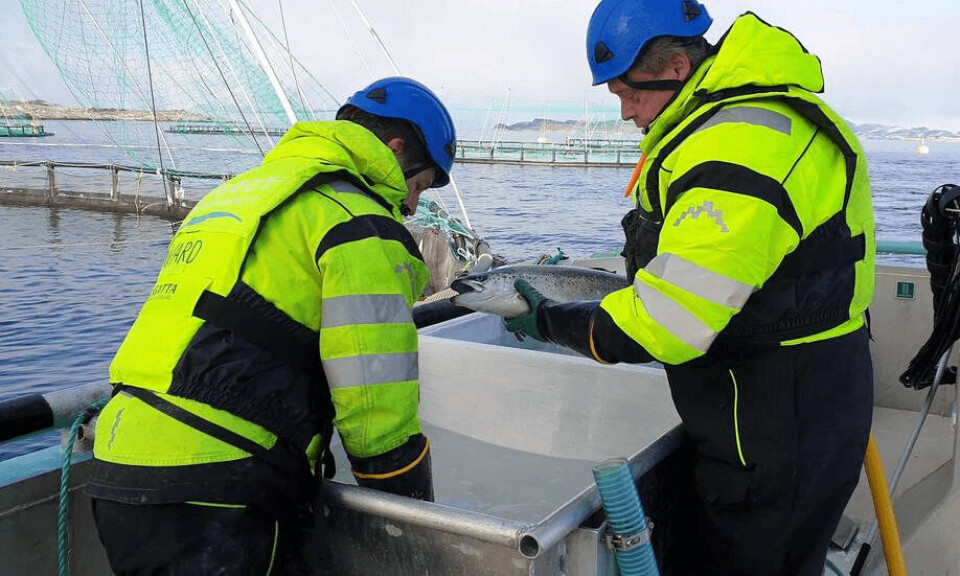
Norway councils get £40m from fish farm licence fees
Councils in fish farming areas of Norway are getting NOK 458 million (£40m) between them from the proceeds of salmon and trout farm licence sales.
It is the third annual payment from the Aquaculture Fund set up to distribute the cash. “Again, the municipalities that facilitate aquaculture receive a well-deserved reward,” said Fisheries and Seafood Minister Harald Tom Nesvik.
Ten county municipalities and 166 smaller municipalities will benefit from the share-out.
‘See the carrot’
The Aquaculture Fund was established in 2016 to safeguard the interests of municipalities that facilitate the aquaculture industry. The revenue is from the sale of new fish farm licences, and 20% is kept by the state. The other 80% goes to the municipal sector and is distributed through the Aquaculture Fund.
The first payment via the Aquaculture Fund came in December 2017 and was NOK 60m. In 2018, NOK 2.7 billion was paid to 164 municipalities and ten county municipalities.
“I hope that even more municipalities and counties see the carrot that lies in the Aquaculture Fund, and that it stimulates the industry to continue to grow,” said Nesvik.
“This means jobs and activity throughout the country, and is money the municipalities can spend developing their services to their citizens within health, school, infrastructure or other areas.”
Traffic light system
In 2018, the government introduced a new scheme, the so-called traffic light system, intended to ensure that growth is predictable and justifiable.
“We will continue to make strict demands on the industry when it comes to sustainability and fish welfare requirements. Later this year, we are going to colour the coast [under the traffic light system], and then the industry needs to keep things organised in order to grow in its areas,” said Nesvik.
This year the Ministry of Trade and Fisheries has adjusted the allocation criteria in the Aquaculture Fund.
For aquaculture sites that cross the municipal boundaries, the money is now divided proportionally. Previously, the municipality where the largest part of the site was located received all the revenue. This affects the pay-out for 11 of about 1,000 sites.






















































